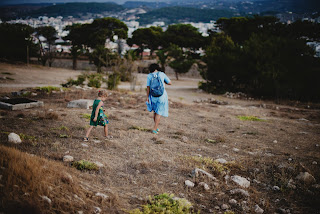There is a short anecdote about
Jug Suraiya, the renowned columnist, which I am fond of retelling.A fellow
guest at a party in Greenwich Village told Jug Suraiya that when he visited Calcutta Calcutta Roy ’s Calcutta Dhaka . Anybody who has stayed here or even visited the
city has his own pleasures and pains, memories and anecdotes. Though I was born
in Calcutta , my first conscious memory is that
of Dhaka . In Dhaka
I have been moving from houses in Madan Mohon Basak road, to Azimpur,
to Dhanmondi and now in Uttara. All these movements have coincided with
distinctive eras in the history and development of the city. In the fifties and sixties I have stayed
in Madan Mohon Basak road and then Azimpur, which were
at that time the newly developed areas, and then in the seventies and
eighties in Dhanmondi which has now become replete with offices and
multi-storied apartments, making it too crowded for my tastes. Uttara is now for
me a place with urban amenities and with the quiet of the suburbs. The
secret of karate is to turn your adversary's strength to your advantage.
Similarly to survive in Dhaka , the secret is
to make every adversity, every misfortune, and every misery work to your
benefit. At least that is what I have been trying to do in my Odyssey through
the city. Perhaps no other place exercises quite the same kind of lure,
composed of about equal parts of nostalgia and anger.
In the various decades and the various areas I have stayed in the development of the city I have seen the first paving of roads as Madan Mohon Basak road transformed from a bed of brick chips to a broad swathe of asphalt, along with others in that area and elsewhere north of the railway tracks. Speaking of the railways , the railway canteen of Sorabjee's at the Phulbaria railway station was a good place for dining out, as were the ‘cabins’ of Sadarghat, where cutlets-prawn or chicken-were a prime attraction. Then came the Chinese restaurants, first Cafe
One of our principal recreations in our younger days was to loiter around in that novel market place, the New Market, the first example of a shopping mall in our country. In the evenings a saunter around the New Market, mostly to ogle at women and sometimes to browse in book shops. And then an hour or more of chatting at a tea shop. The chatting is one institution, present also in the neighbouring metropolis of
Festivals such as the Eid, the Pujas, Christmas, and also Bengali New Year and fairs of all types such as Ekushe Boi Mela, and Export Fair, are occasions for us to indulge in an orgy of festive activity. All our bottled-up emotions and sentiments are let loose and we undertake recreational parades around the town and on the fairgrounds. The simple reason is that there are now precious few places to wander around.
The only park worth the name, Suhrawardy Uddyan, is like
Cultural events in the city are of infrequent occurrence. The most regular amongst these are the theatrical performances, while public musical or dance performances are rare and often relate to events like Bangla New Year, or Boi Mela or visits from artistes abroad. These days cable television has literally opened a window on the world but we are at the same time swamped by the invasions of other cultures.
The city therefore seems to be all past and no future, and so capable of inducing a virulent attack of nostalgia. Random, haphazard, raucous the city has lived through wars and riots, epidemics and floods. But

